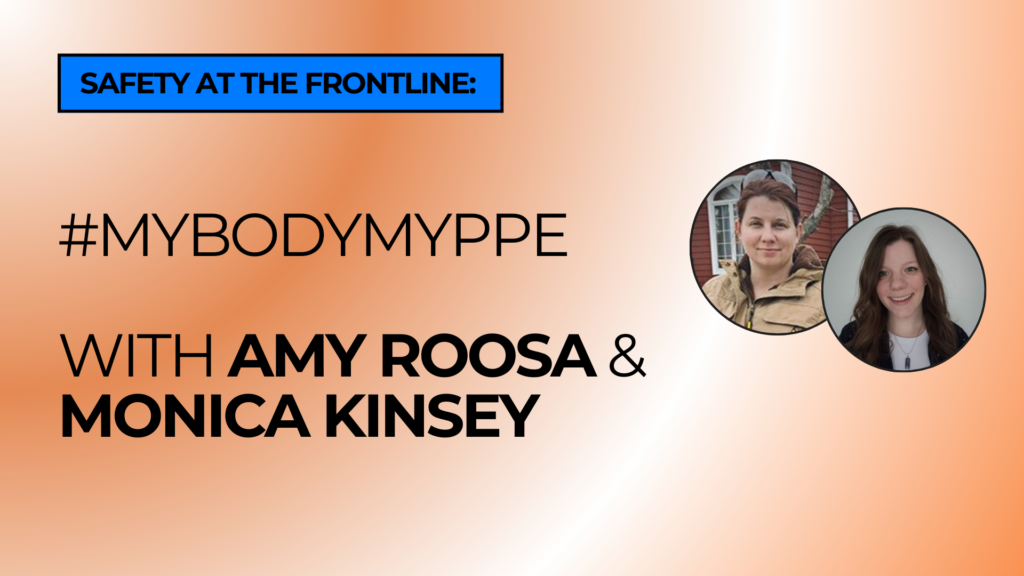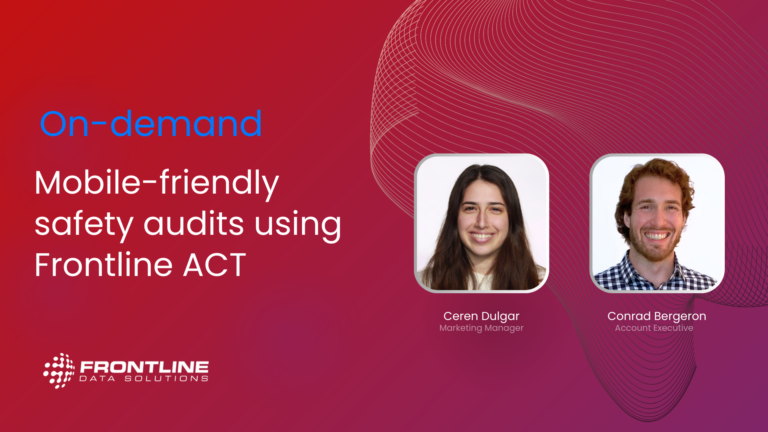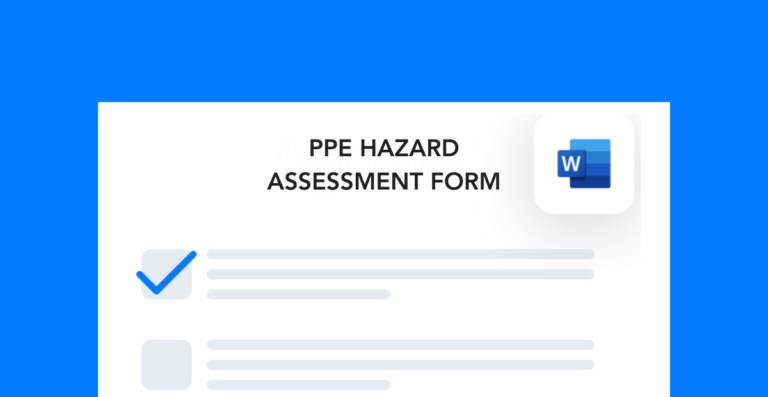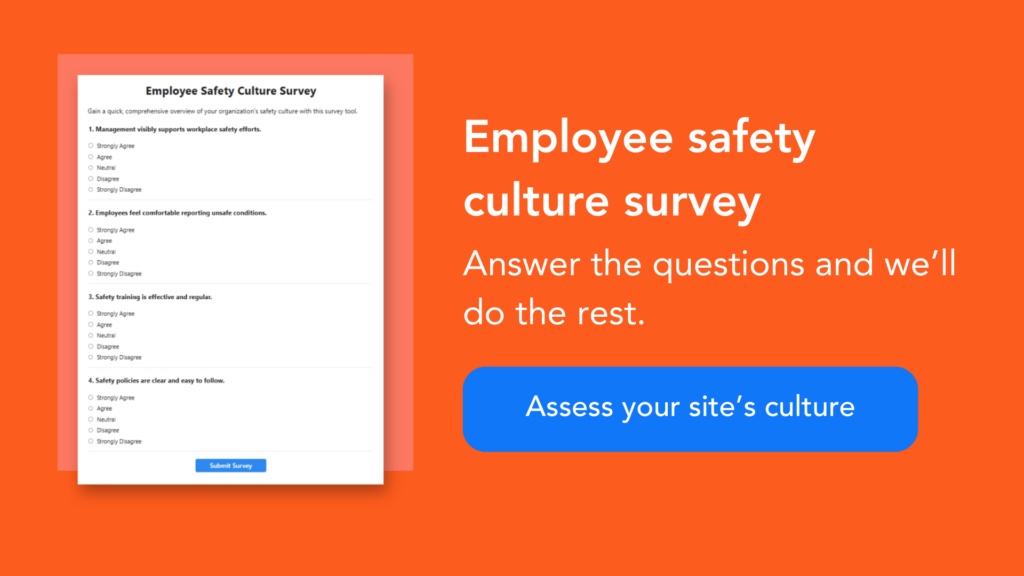Try one of these strategies to get promoted in EHS
Getting promoted in health and safety is as much about performance as it is about perseverance. At a base level, you’ll need to effectively manage your workload and actively contribute to the team. To go to the next level, you’ll need to do something outside the scope of your current role. Here are 6 ideas of things you can do to get promoted as an EHS professional.
Transform an internal EHS process
The variables that affect compliance are constantly changing. Employee turnover, process equipment, product lines, quality standards—even politics—may affect your site’s safety needs. As an EHS professional, you need to be able to adapt to these changes efficiently.
That’s why improving internal EHS processes is a good way to get a promotion. The better your team manages day-to-day responsibilities, the faster you can react to unexpected events. Some of the internal processes you might consider tackling include:
- Incident reporting
- Recordkeeping of injuries, incidents, and near misses
- Incident investigation and root cause analysis
- Workers’ compensation claims management
- Data management with EHS software
- Requisition of safety supplies like first aid kits, PPE, etc.
- Employee safety training and onboarding
This is an effective promotion strategy because it keeps the scope of your attention within the EHS department. That means you’ll have more control over the outcome of your efforts and your direct supervisor will be able to see your contributions.
Spearhead a sitewide safety initiative
Successful EHS programs keep workers informed and engaged regarding site safety. Lead a sitewide safety initiative to boost engagement and improve communication between your department and the rest of the workforce.
Maybe you want to try a new approach to hazard communication or create an incentives program for your workers. The more creative, the better. But remember it’s all about the execution. It’s worse to start a safety initiative and not finish it than it is to not start one at all.
Make sure you document the entire initiative from start to finish. That way, during your performance evaluation, you can provide clear results.
Oversee a major EHS project
Overseeing a major project is a great way to get the recognition you need for a promotion. It shows your ability to take ownership and to manage multiple responsibilities at a time. Here are some ideas for projects you might consider:
- Expanding women’s PPE access at your site
- Starting a safety committee
- Replacing outdated processes or equipment with an alternative
- Creating a new system for reporting hazards, near misses, etc.
- Coordinate the implementation of a new technology tool
It’s important to pick a project that doesn’t affect your performance in other areas. Ideally, you’d choose one that aligns with the work you’re already doing.

Find a way to cut costs
Traditionally, executive leaders have viewed the safety department as a cost center, although this viewpoint has begun to change over time. One way to impress senior leadership is to find significant cost cutting measures that don’t affect performance.
Examples of areas where you might lower costs include:
- Vendor contracts (PPE, first aid supplies, etc.)
- Time spent processing paperwork
- Regulatory compliance
- Property damage or injury costs
Your approach will depend on the resources you have available. If you’re an EHS specialist with no control over the budget, you’ll have to present your idea as a recommendation. If you’re an EHS manager with direct budget influence, then you can reduce expenses and share the results.
Either way, lowering costs demonstrates your ability to find creative solutions to business problems. It’ll help you stand out to senior leaders so you can get promoted even faster.
Increase the PPE adoption rate
Although PPE is the last line of defense, it still plays a major role in any EHS program. That’s especially true if your team struggles to get workers to wear the gear. Increasing your site’s PPE adoption rate is a great way not only to prevent incidents but also to boost engagement.
Do a perception survey with your workers to answer these questions:
- Why don’t workers wear their PPE?
- Are there any issues with the PPE you provide that make workers not want to use it?
- Do employees know the PPE policies you have in place?
- Do supervisors enforce the PPE requirements?
Use the answers to these questions to figure out how to increase PPE use. For example, maybe you need to find a PPE supplier that has more sizes or styles available. Or maybe you need to do a PPE hazard assessment and redetermine which equipment is required for each process.
Make sure you find a way to track PPE adoption over time. Doing job surveys can help you quantify performance before and after you implement your changes to suppliers, policies, or procedures.
Track, analyze, and reduce near misses
Many companies don’t carefully track near misses which is a HUGE missed opportunity. Near misses offer tons of insight that you can use to improve your entire safety program. If you want to get promoted, consider making this your new mission.
The key to reducing near misses is to have a standard reporting process in place and encourage workers to use it. Reports allow you to figure out which departments, processes, equipment, etc., are the most dangerous. From there, you can brainstorm ways to control or eliminate these hazards.
Reducing near misses demonstrates your proactive approach to safety. And if it helps lower incident rates as well, then that’s further proof of your effectiveness as an EHS leader.





